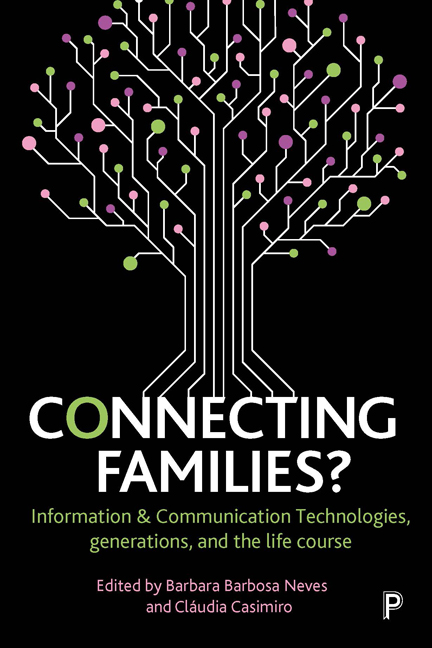Book contents
Foreword - The family has become a network
Published online by Cambridge University Press: 22 April 2022
Summary
Once upon a time, many families in the developed world lived in little boxes surrounded by white picket fences. For example, Fun with Dick and Jane was the school primer I read as a child in 1947. In this first book for any of us six-year-olds, breadwinner ‘Dad’ went off to work every morning, leaving his housewife ‘Mom’ at home to do household chores and look after their children – ‘Dick’ and ‘Jane’ – along with their dog ‘Spot’.
As Bob Dylan tells Mr Jones, stuck in an old paradigm, the times are changing in how families are constituted and connect: The old road is rapidly aging for mothers and fathers. Something is indeed happening, and this challenging book provides a good handle on what contemporary families are like.
Change does not happen in a vacuum. To gain perspective on the present nature of families, it is useful to think about the profound social, cultural, financial, political, and technological transformations that have occurred since Dick and Jane's 1950s. Although most of the specific phenomena I discuss will seem obvious to contemporary readers, taken together they describe a profound change from the solidary family groups of the 1950s (and before) to the networked families of today. I draw on evidence principally from North America to illustrate these changes, although I believe they are more widely applicable elsewhere.
Composition
In the twenty-first century, Dick and Jane are each likely to link up with several other Dicks and Janes. The taboo on premarital sex has weakened. For example, in 2005 nearly half (43%) of Canadians aged 15‒19 had had premarital sex, and it is likely that much of the laggard half had sexual relations sometime afterward (Rotermann, 2008). This is quite a change from the 1950s’ quixotic attempt to preserve premarital chastity.
It is now common to live together as ‘partners’ without exchanging marital vows or filing legal documents. While some states recognize this as ‘common-law marriage’ after a few years, in practice it has less legal or moral force than marriage.
- Type
- Chapter
- Information
- Connecting Families?Information and Communication Technologies, Generations, and the Life Course, pp. xv - xxPublisher: Bristol University PressPrint publication year: 2018



